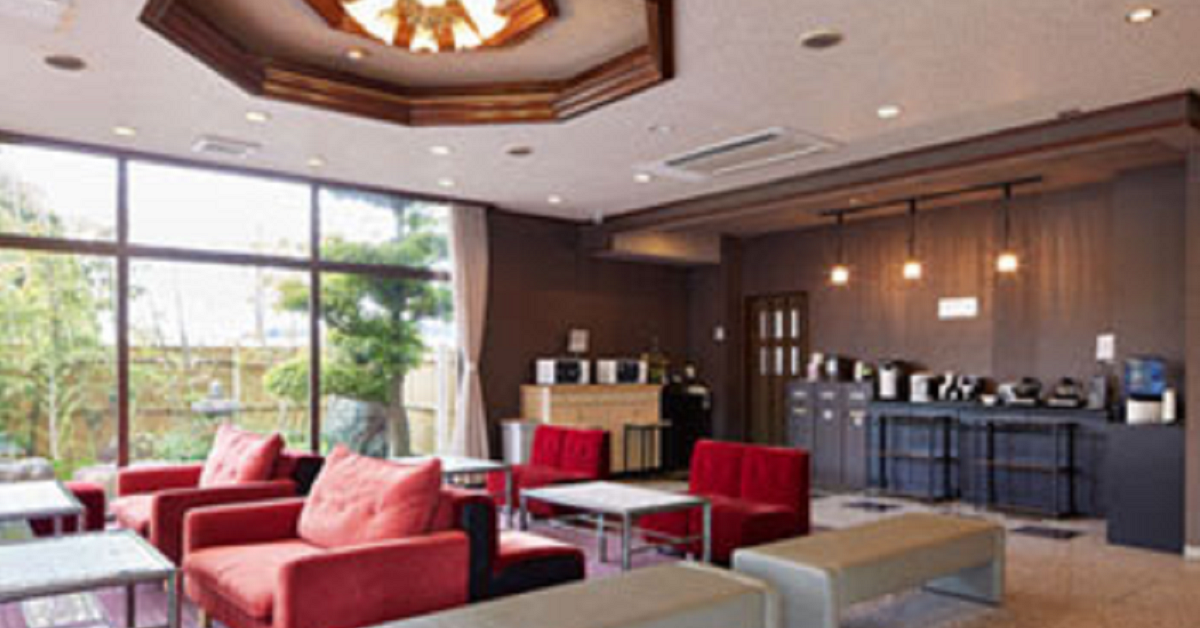Hotel Ito, nestled in Wakayama Prefecture, is a legendary filming location of the movie KOKUHO. With its timeless Showa-era charm, the soft glow of its lamps, and the gentle scent of aged wood, the hotel offers a serene escape into a past Japan that still breathes today.
Hotel Ito as the Filming Location of KOKUHO
KOKUHO is a cinematic work that explores the themes of Japanese tradition, artistry, and human passion. Within this story, Hotel Ito serves as a central setting, symbolizing the delicate balance between past and present. The rooftop scenes, bathed in the gentle glow of the Wakayama sunset, capture the warmth and melancholy of the Showa era, becoming some of the film’s most memorable moments.
The hotel’s original lighting, wallpaper, and furniture have been carefully preserved, creating a space where visitors can relive the movie’s ambiance. Walking through the same corridors and climbing the same stairs that appeared in the film offers a unique experience—as if stepping directly into the world of the movie.
| Filming Location | Description |
|---|---|
| Rooftop | Key emotional scenes were filmed here, with stunning sunset views over Wakayama. |
| Guest Rooms | Retain vintage furniture and soft lighting, evoking Showa elegance. |
| Corridors & Stairs | Timeless spaces that embody the film’s nostalgic tone. |
| Lobby | Wooden counters and antique clocks radiate the warmth of history. |
The entire hotel feels like a living movie set—a place where visitors can walk through and become part of the story themselves.
The Timeless Charm of Hotel Ito
Built during Japan’s postwar economic boom, Hotel Ito stands as a living remnant of the Showa era. Its wooden framework, handcrafted details, and warm lighting reflect the artistry of that period. Walking its hallways evokes a gentle rhythm of time—a sense of stillness and calm that modern hotels rarely offer.
The atmosphere slows time itself, surrounding guests in tranquility and nostalgia.
| Highlight | Details |
|---|---|
| Courtyard | A small garden that changes with the seasons; a favorite photo spot. |
| Dining Hall | Retro lighting and tableware recreate the dining experience of the 1960s. |
| Window Views | Overlook the city and sea of Wakayama; sunsets are especially breathtaking. |
Each element—aged wood, polished floors, light filtering through the windows—tells the quiet story of Showa Japan. Rather than chasing modernity, Hotel Ito embraces timeless beauty, creating a sense of peace that transcends generations.
A Cultural Symbol of Wakayama
Wakayama has long been a region where nature and culture coexist harmoniously. Within this landscape, Hotel Ito has served as a bridge between locals and travelers, becoming a beloved symbol of community. Its history as a gathering place spans decades, carrying the memories of countless guests.
Since the release of KOKUHO, the hotel has drawn visitors from across Japan. Nearby shops and restaurants have joined together to celebrate its cinematic legacy, hosting events and exhibitions that link film with regional tourism. The people of Wakayama take pride in preserving the hotel, treating it as a “cultural treasure” rather than just a place to stay.
| Community Connection | Description |
|---|---|
| Local Ingredients | Traditional breakfasts use seasonal fish and vegetables from Wakayama. |
| Partnerships with Local Shops | Collaborative exhibits and movie-themed goods are available nearby. |
| Tourism Collaboration | Guided tours link Hotel Ito with surrounding cultural landmarks. |
The warmth of the local people enhances the hotel’s charm. Staff members uphold the spirit of Japanese hospitality, offering guests a heartfelt experience that blends tradition and sincerity.
A Pilgrimage Site for Film Fans
Since the release of KOKUHO, Hotel Ito has become a sacred destination for film enthusiasts. Inside the hotel, visitors can find displays of behind-the-scenes photos, props, and scripts from the production. Many fans take photos recreating scenes from the movie, filling the hotel with a quiet yet passionate energy.
| Fan Experiences | Description |
|---|---|
| Film Location Tour | Guided tours of the rooftop, rooms, and lobby used in the movie. |
| Exhibition Corner | Showcases costumes, props, and original script copies. |
| Exclusive Stay Perks | Guests receive commemorative postcards and photo opportunities. |
Guests often describe their visit as “like stepping into the film itself” or “reliving the emotions of the story”. Through these shared experiences, Hotel Ito has become a living community that connects fans, art, and place.
Looking Ahead: Preserving the Legacy
The renewed popularity of Hotel Ito extends far beyond its role in KOKUHO. Preservation projects are underway to protect the building as an example of Showa-era architecture worth safeguarding for future generations. Wakayama Prefecture has embraced this initiative, combining cultural preservation with tourism development.
Plans include exhibitions that celebrate Showa design, local music events, and cultural workshops that allow visitors to engage with history firsthand. Hotel Ito continues to be a symbol of continuity, connecting the artistry of the past with the creativity of today.
Conclusion
Hotel Ito is more than a film location—it is a living memory of Japan’s Showa era.
From the rooftop’s open sky to the quiet hallways filled with the scent of old wood, every corner whispers stories of a time when craftsmanship and sincerity shaped daily life.
It stands as a bridge between past and present, where culture, cinema, and community converge. Wrapped in the warmth of Wakayama’s people and landscape, Hotel Ito will continue to shine as both a cinematic landmark and a cultural treasure for generations to come.






